Falling cost damages polyester filament yarn industrial chain
On September 3, the U.S. ISM Manufacturing Index for August was at 47.2, lower than expected, with the new orders/inventory ratio dropping to recessionary levels. U.S. stocks saw their largest drop since August 5, and the VIX, a measure of market volatility, spiked over 40% at one point. Commodities suffered significant losses, with oil prices falling over 4%, erasing gains made in the year. WTI crude oil approached $70, while Brent crude oil dropped over 5% to its lowest point of the year.
On the raw material side, there are persistent inventory accumulation expectations for PX and PTA, adding bearish pressure. Absolute prices have declined, leading to a continuous compression in processing spread. Currently, PXN has compressed to around $231.5/mt, and PTA-PX has reduced to around 269yuan/mt; the raw material cost of polymer melting has fallen to a new low of 5,920yuan/mt this year.
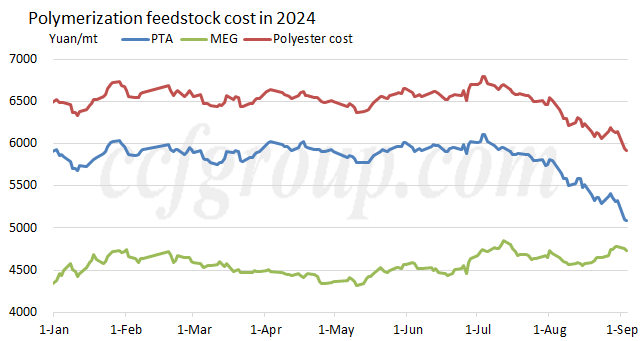
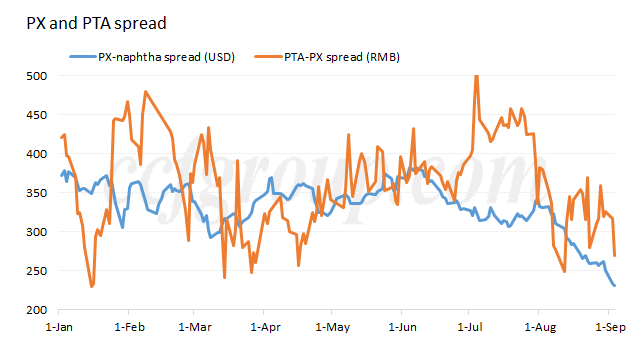
With the cost continuing to decline, polyester filament yarn and its downstream factories are facing severe damage.
1. Failure in bottom fishing raw material, devaluation of both yarns and feedstock inventory
Since the end of July, downstream factories for polyester filament yarn have carried out three rounds of concentrated speculative purchases (at the end of July, mid-August, and the end of August), but as it stands, polyester filament yarn plants may face the pressure to trace downtrend on cost side at the end of August.
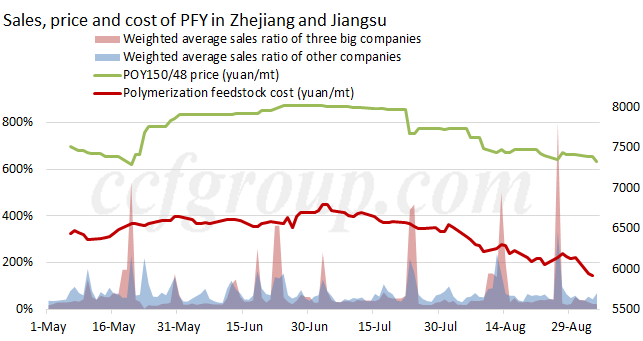
While the price of polyester filament yarn remains weak, the prices of downstream greige fabrics, especially conventional varieties, are also facing downward pressure due to high inventory levels. The inventory of raw material and finished goods in PFY and grey fabrics is both devaluated.
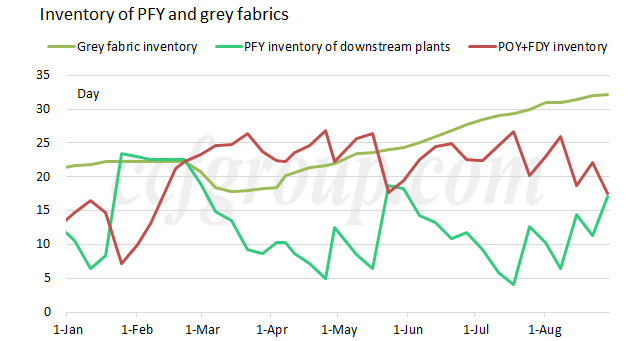
Taking the profitability of polyester filament yarn factories as an example, nominal cash flows calculated based on the spot price and the melt cost during July and August showed fairly good profit performance despite simultaneous declines in raw material and their own prices. In August, the average nominal cash flows for POY and FDY 150D were still 169yuan/mt and 272yuan/mt, respectively.
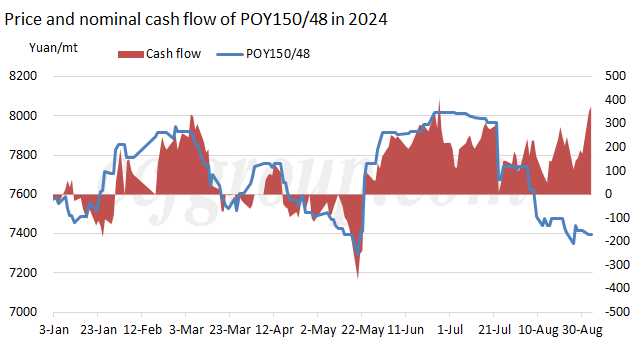

However, most factories are affected by the timing of raw material purchases and the timing of product sales. If we consider melt costs based on purchases made 20 working days prior (calculated using the average price from the previous 20 working days), coupled with the profit and loss of PFY spot inventory (assessed as current price minus the average value from the previous 20 working days), the actual profits from May to June were greater than nominal cash flows, while profits in July were less than nominal cash flows, and August even resulted in actual losses, with September facing similar challenges. The DTY and greige fabric segments face similar issues; furthermore, September and October are traditionally peak seasons for downstream DTY and greige fabric sales. Companies that prepared inventory for seasonal products since the first half of the year will face greater pressures, as the current state of inventory preparation shows that greige fabric factories are the most burdened.
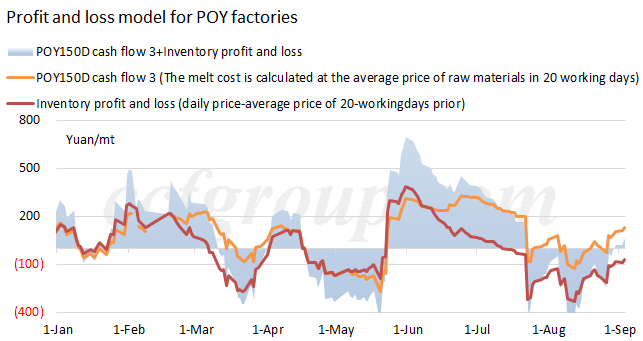
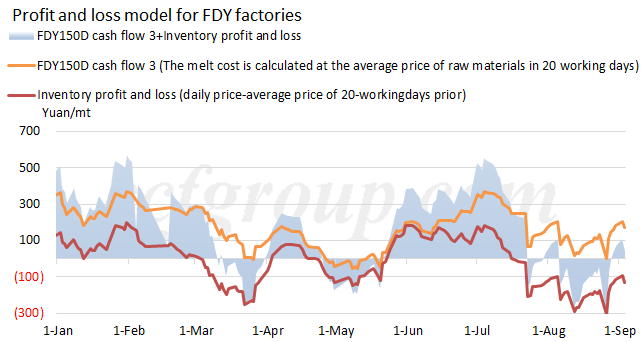
In contrast, a small number of polyester filament yarn plants and fabric factories that sold off inventory and pre-sold in early-August may now secure more profits amid the ongoing decline.
2. Drag on"Peak Season" in terms of timing and quantity
The demand downturn was particularly evident in June and July this year, with end-users in the textile and apparel sector primarily stocking up for autumn and winter in the fabric manufacturing segment, and fabric merchants as well as downstream textile and apparel producers not preparing much inventory. Theoretically, the concentrated production and purchasing demand from textile and apparel producers in September and October may be restrained by continued price declines, delaying restocking times and compressing the enthusiasm for replenishment.
From a broader perspective, sales domestically and internationally after September are likely to anticipate a decrease. Production and trading companies may operate more cautiously. The new investments in DTY and fabric manufacturing equipment may be postponed; some companies may implement tighter inventory control and consider cash management in their operations.
- Top keywords
- Cotton Price
- Cotton Futures Price
- Cotton Futures
- CZCE
- PTA Futures Price
- Chemical Fiber
- Polyester Prices
- Wool price
- PTA Futures
- Shengze Silk
- China
- Yarn Price
- price
- China Textile City
- Fibre Price
- Benzene Price
- Cotton
- Index
- Cotton Index
- PTA
- fabric price
- NYMEX
- Top 10
- textile industry
- Spot Cotton
- Cotton Yarn
- Polyester Price
- Futures
- PTA Price
- cotton yarn price

